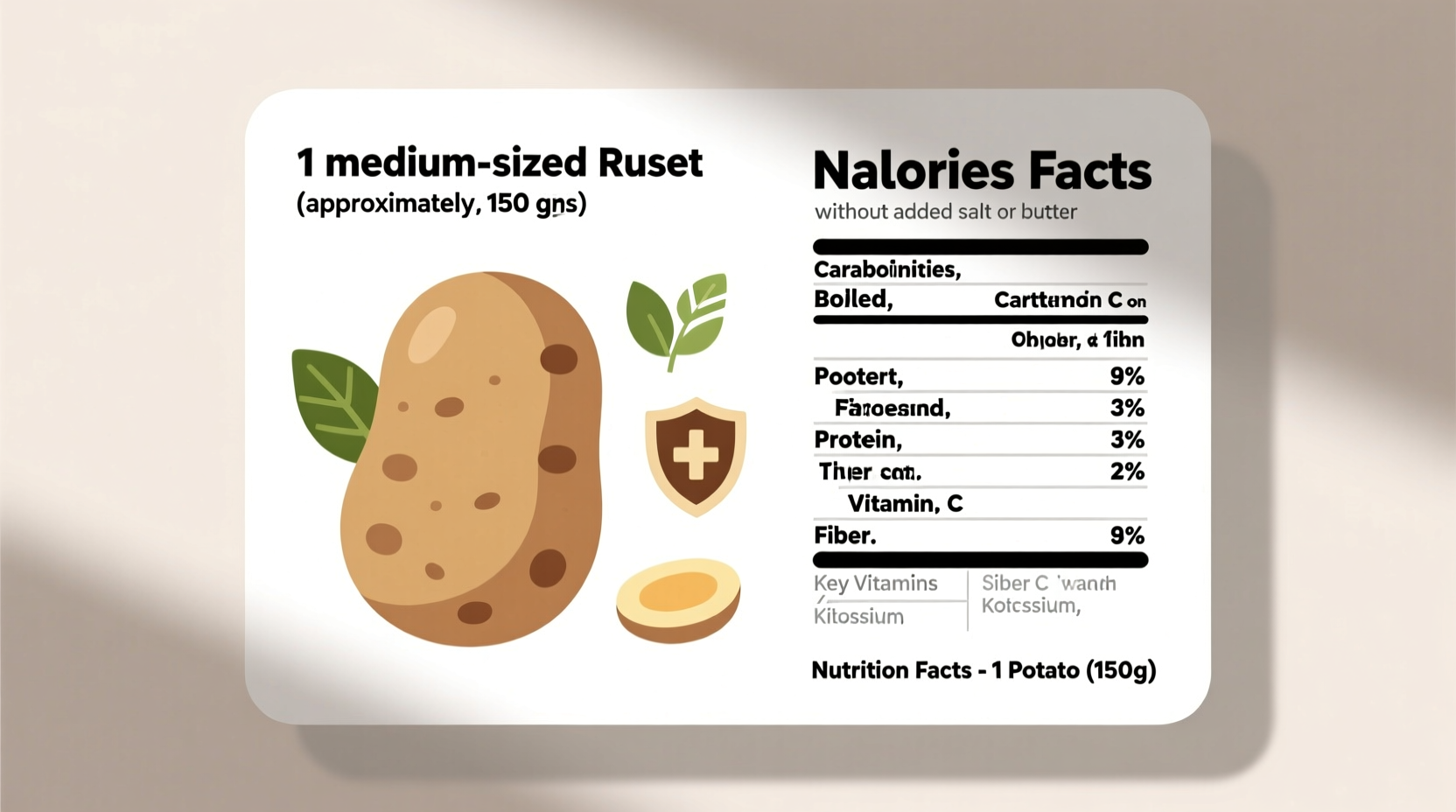Understanding potato calories goes beyond a single number. The exact count varies based on potato type, size, and preparation method—critical details for accurate nutritional tracking. This guide delivers precise, science-backed information you can trust for meal planning, dietary management, and making smarter food choices.
Why Potato Calorie Counts Matter for Your Diet
Whether you're counting calories for weight management, tracking macros for fitness goals, or managing health conditions like diabetes, knowing the exact calorie content of potatoes helps you make informed decisions. Potatoes often get misunderstood in nutrition discussions—they're not just "empty carbs" but nutrient-dense vegetables packed with vitamins, fiber, and minerals when prepared properly.
Standard Calorie Counts by Potato Type
The USDA FoodData Central database provides the most reliable nutritional information for raw and cooked potatoes. Here's what their comprehensive analysis reveals:
| Potato Type | Size | Calories (Raw) | Calories (Baked) | Calories (Boiled) |
|---|---|---|---|---|
| Russet | Medium (5.3 oz/150g) | 110 | 168 | 134 |
| Yukon Gold | Medium (5.3 oz/150g) | 100 | 150 | 120 |
| Red Potato | Medium (5.3 oz/150g) | 100 | 150 | 120 |
| Sweet Potato | Medium (5 oz/140g) | 103 | 180 | 112 |
| Fingerling | Medium (3.5 oz/100g) | 70 | 105 | 84 |
Data source: USDA FoodData Central, Release 1.0 (2023)
How Preparation Method Dramatically Changes Calorie Content
What you do with your potato significantly impacts its calorie profile. The cooking process affects water content, density, and often adds additional ingredients that boost calories substantially:
- Baking: Increases calorie density as water evaporates (a raw 150g potato becomes about 130g when baked)
- Boiling: Minimal calorie change, but water absorption can make portions seem larger
- Frying: Adds significant calories from oil absorption (French fries: 312 calories per 100g)
- Mashed: Calories increase with added butter, milk, or cream (plain mashed: 123 calories per 100g vs. with dairy: 200+)
- Skin-on vs. peeled: Keeping the skin adds fiber and nutrients while adding minimal calories

Practical Portion Guidance for Common Scenarios
Understanding real-world portions helps translate nutritional data into practical meal planning:
- Restaurant portions: Often serve 8-10 oz potatoes (225-280g), containing 250-350 calories before toppings
- Meal prep containers: A standard 1-cup serving of diced potatoes equals approximately 115 calories
- Weight management: For 300-calorie meals, limit to one small potato (4 oz) with non-starchy vegetables
- Active lifestyles: Athletes can benefit from larger portions (6-8 oz) as quality carbohydrate sources
Nutritional Context: More Than Just Calories
While calorie count matters, potatoes offer valuable nutrients that make them worthy of inclusion in balanced diets:
- Excellent source of vitamin C (providing about 30% of daily needs in one medium potato)
- High in potassium (more than a banana) which supports healthy blood pressure
- Good source of vitamin B6, manganese, and dietary fiber (especially with skin)
- Naturally fat-free and cholesterol-free
- Contains resistant starch when cooled after cooking, which benefits gut health
Common Misconceptions About Potato Calories
Several myths persist about potatoes and their role in healthy eating:
- "Potatoes are just empty calories" - False: They contain significant vitamins, minerals, and fiber
- "All potatoes spike blood sugar" - Oversimplified: Glycemic index varies by type and preparation
- "Sweet potatoes are always healthier" - Not necessarily: Both have nutritional benefits depending on dietary needs
- "Potatoes cause weight gain" - Misleading: Preparation method and portion size determine impact on weight
Smart Strategies for Including Potatoes in Balanced Meals
Maximize the nutritional benefits while managing calorie intake with these practical approaches:
- Choose smaller portions (4-6 oz) of boiled or roasted potatoes instead of fried versions
- Always leave the skin on for added fiber and nutrients
- Pair with protein sources and non-starchy vegetables for balanced meals
- Cool cooked potatoes to increase resistant starch content
- Use herbs and spices instead of high-calorie toppings like butter and sour cream
- Measure portions rather than estimating to maintain accurate calorie tracking
When Potato Calories Might Require Special Attention
Certain health conditions may require modified approaches to potato consumption:
- Diabetes management: Monitor portion sizes and pair with protein/fat to moderate blood sugar response
- Kidney disease: May need to limit potassium-rich foods like potatoes
- Weight loss goals: Focus on smaller portions of boiled or roasted potatoes rather than fried versions
- Digestive sensitivities: Some people with IBS may need to limit certain potato preparations
Tracking Potato Calories Accurately
For precise nutritional tracking:
- Weigh potatoes before and after cooking to account for water loss
- Use food scales rather than volume measurements for accuracy
- Consider the entire dish when tracking (e.g., potato salad includes added calories from mayo)
- Reference the USDA FoodData Central database for the most current nutritional information
- Account for all added ingredients in your preparation method











 浙公网安备
33010002000092号
浙公网安备
33010002000092号 浙B2-20120091-4
浙B2-20120091-4